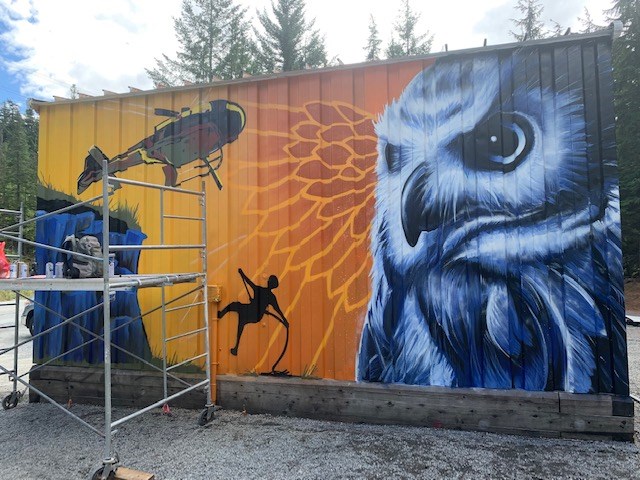A few pieces of Whistler Search and Rescue (WSAR) equipment will have a cozy new home this winter.
The local volunteer organization recently took possession of a pair of garage-style buildings located on Cheakamus Lake Road that will be used to house the group’s snowmobiles, trucks, trailers, ATVs and e-bikes—a circumstance WSAR volunteers say will help to significantly reduce response times for calls south of Whistler Village, potentially saving lives.
Volunteers have been working to gain possession of the site since the spring of 2019, explained WSAR director Greg Newton, when the organization heard through the grapevine that squatters had been occupying the abandoned buildings.
The parcel of land is owned by B.C.’s Ministry of Forests, Lands, Natural Resource Operations and Rural Development. It was previously occupied by BC Hydro and housed construction equipment used to maintain nearby roads, before the entity subletted the space to Telus. BC Hydro’s lease expired in 2018.
WSAR is currently in the process of finalizing a lease for the space from the municipality, which is subsequently leasing the space from the province.
The buildings will serve as additional storage for the volunteer search-and-rescue organization. WSAR will continue to maintain the base it has occupied in Whistler’s works and services building on Nesters Road since 2006, but has since outgrown.
“We’ll still keep some equipment north of the village—probably a couple of e-bikes—but the majority of equipment will probably be stored down there,” Newton said.
The more southern location will also provide an added benefit during WSAR’s frequent callouts to areas like Cheakamus Lake, the Sea to Sky Trail or the Callaghan, Newton said. Currently, volunteers have to pick up the WSAR truck, drive to the group’s existing storage site at Mons Crossing, and load snowmobiles onto the vehicle before turning around to head southbound on Highway 99. The entire process can take between 30 and 45 minutes, Newton explained—precious time that will be saved now that the truck can be stored in Cheakamus and pre-loaded with the sleds.
“We had an incident several years ago, where there was someone that had fallen into the river,” he said. “He had become hypothermic and was wading through the river. He didn’t die, but he was probably minutes away from dying or succumbing to the elements. So yeah—30 minutes can mean all the difference, for sure.”
Anyone driving past the site will likely notice a pair of stunning, brightly coloured murals adorning the buildings’ sides. WSAR commissioned local artist Kris “Kups” Kupskay for the pieces—one featuring a wise-looking owl and the other a wolf—partly in an effort to discourage any graffiti or vandalism on the once-abandoned site.
“It’s a nice entrance to the former Athletes Village, that’s for sure,” Newton said.
As fall approaches, WSAR’s director is reflecting on an eventful summer and reminding adventurers to take precautions before heading out into the mountains.
This year saw volunteers frequently called to zones like Black Tusk and Blackcomb Mountain, Newton said.
“It has been a busy summer for sure,” he said. “And I think the complexity of the calls has been elevated. We’ve had to do a lot of long-line [rescues] where we’ve had to extricate some subjects from areas that were very precarious, actually, and they could have went either way.”
Newton recommends that hikers gauge their fitness levels with shorter, easier routes before setting out on more adventurous, and in some cases, multi-day objectives—“Baby steps first,” he said—and ensure they’re prepared for current conditions before embarking on their trip.
“The days are getting shorter, so we’re certainly encountering darkness a lot quicker than we did a month ago, and then it’s getting colder at night,” Newton said. “So just be careful.”




.jpg;w=120;h=80;mode=crop)
